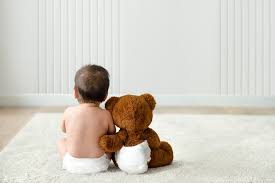Since your mother’s time, diapers have evolved tremendously! Other than disposable diapers (which were introduced in the early 1970s and have continued to evolve) there are now a wide variety of reusable diapers available, including prefolded diapers, all-in-one diapers, contoured and pocket-style diapers, as well as inserts, liners, and other protective accessories. If you’re worried about buying diapers, don’t be.

Diapers, on the other hand, will be required until your child is properly potty trained. Baby number two may be a better fit for disposable diapers than baby number one (or vice versa) as your child grows and your household changes over time. As a result, use this entire guide to diaper buying essentials to help you get through the marathon that is the diaper years.
Disposable diapers and cloth diapers are the two major types of diapers. See what each genre has to offer.
In order to change 2,500 diapers before your baby turns one, you’ll need to spend at least $600 on disposable diapers alone. According to the firm, eco-friendly disposable diapers can cost you an additional $500-$1,000 a year in diaper costs. Products for babies in Malaysia are always ever-so-ready for you online and in stores. Fabric diapering costs more upfront, but over time it is more economical. A laundry/delivery service can save you around a third of the cost of throwaway items.
Disposable diapers are more convenient for some parents, while cloth diapers are more environmentally friendly and less expensive for others. Cloth diapers at home and disposable diapers on the move are becoming more popular among families.
Consider trying out a variety of cloth diaper brands and designs before buying in bulk or joining a cloth diaper delivery service.
Cloth or disposable diapers, the first rule is the same: But don’t buy too much. There is a surprising rate at which babies outgrow diaper sizes. Your baby’s diapering demands will alter over time as well.
Ditto for the disposable diapers that are manufactured from synthetic materials like polyethylene and/or polypropylene, which are deemed entirely safe. They have a super-absorbent material like sodium polyacrylate, which is non-toxic and can absorb several times its weight in liquid.
Chlorine-free, fragrance-free, latex-free disposable diapers are readily available. In addition to being biodegradable, certain green disposables may also have layers produced from biodegradable or renewable materials In addition, a few eco-friendly diaper companies donate a portion of their profits to environmental charities.
This type of cloth diaper is comparable to the ones your grandmother used on her children, and it is manufactured from cotton, flannel, or bamboo. It takes a little practice and a few cloth diaper accessories to cloth diaper a baby with one of these no-frills nappies: If you want to avoid leaks, you’ll need a waterproof diaper cover to cover the cloth and secure it with separate snaps or pins.

